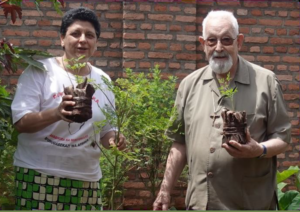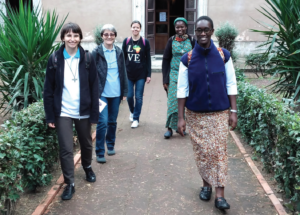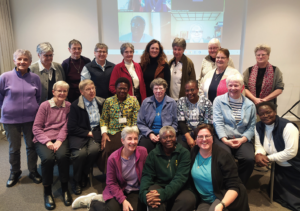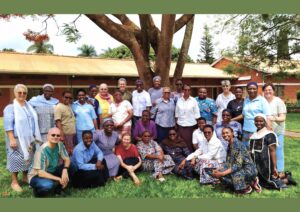 Sharing on the Gospel of the Wedding Feast of Cana (Jn 2:1-12)
Sharing on the Gospel of the Wedding Feast of Cana (Jn 2:1-12)
April 30, 2016, Feast of Our Lady of Africa – Rome, MSOLA Generalate. We are here today to celebrate Our Lady of Africa, a feast dear to our religious family following Cardinal Lavigerie. This feast puts us directly in line with our origins in Algiers, with Africa which is for each one of us like a seal upon our heart; and with Mary the mother of Jesus who was given to us by our Founder as patron and protector.
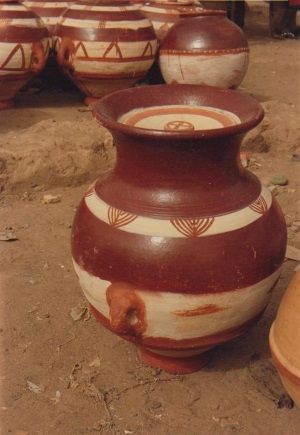 We can put what we live today, the joy of a family feast in line with the Gospel that presents a wedding feast in Cana of Galilee. The author mentions twice that it is in Galilee that this feast takes place and a sign that Jesus gives in Galilee, intersection of nations. It is the same for us. Our cities and even our villages have become intersections where there are people of every tongue, of various origins, religions, values, cultures. It is in this melee that the wedding feast is presented to us, feast of a covenant between families, a symbol of God’s Covenant with us. It is in our daily lives that God is faithful to the covenant that we made with him and it is on His faithfulness that our joy depends. And it is in our daily lives that we are sent to live the encounter with others in their difference.
We can put what we live today, the joy of a family feast in line with the Gospel that presents a wedding feast in Cana of Galilee. The author mentions twice that it is in Galilee that this feast takes place and a sign that Jesus gives in Galilee, intersection of nations. It is the same for us. Our cities and even our villages have become intersections where there are people of every tongue, of various origins, religions, values, cultures. It is in this melee that the wedding feast is presented to us, feast of a covenant between families, a symbol of God’s Covenant with us. It is in our daily lives that God is faithful to the covenant that we made with him and it is on His faithfulness that our joy depends. And it is in our daily lives that we are sent to live the encounter with others in their difference.
Yet amid the celebration there unfolds a tragic event: “They have no wine.” It is the mother of Jesus who realizes this, who sees the first signs of trouble, probably of the servants. There are so many people at the wedding, but there is only one, with her mother’s heart, capable of giving and caring for life, who looks, sees and understands. The others continue as if nothing had happened. She is attentive, she sees, she is moved; her heart is touched, she does something. She goes to her Son. She tells him what she has discerned: “They have no more wine.” Nothing more. Is this not the greatest lesson we can learn about the way to pray? We turn to Christ, showing him what we live, what we see in our intersection of nations. And we do this with faith. Her faith leads her to action: turning to the servants she says: “Do whatever he tells you.”
The first transformation,a transformation of each one of us.
And what about me, do I have my eyes open to see what is missing? If I try to enter the scene, where do I find myself? There are two groups of people: the mother of Jesus who sees what is missing, is moved and acts in alerting her son and others, including the headwaiter (the one in charge) They have seen nothing. They keep their heads in the sand. And even if they see, they must feel paralyzed like us on many occasions, but what can we do? It is better to say nothing, to pretend it has nothing to do with us, so as not to attract negative consequences. Pope Francis has repeatedly set before us our responsibility to see and to act. He often puts us on guard against the globalization of indifference. Here is the first transformation to which the text calls us following Mary, a transformation of each one of us: to open our eyes and our hearts and act, thus becoming “a living sign of the Presence of God’s mercy in Christ” (Message of Pope Francis for Lent 2015).
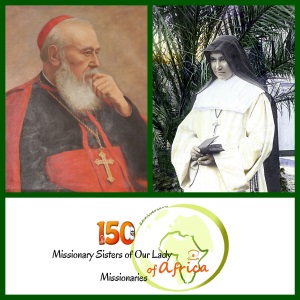 As we are on the way to the 150th anniversary of our founding, in this effort to see and act, we can remember our Founder, Cardinal Lavigerie. He had a real attachment to Mary, not only because he was reciting the rosary, but because seeing the situations of his time, he created works which he put under Mary’s protection such as the Basilicas of Algiers and of Jerusalem, and especially our two Institutes, in which he wanted men and women apostles, sent for the evangelization of Africa. Uniting action and prayer, in his fight against slavery he dared to speak so familiarly to Mary: “O Mary, here we have proclaimed you Queen of Africa; that was twenty-five years ago and Africa has relied on your protection. What have you done for her? And how is it you still suffer such horrors? Are you only a Queen to reign over corpses? Are you a Mother only to forget your children? This must end!” (Quoted in a circular letter of Bishop Durrieu, 12.08.54)
As we are on the way to the 150th anniversary of our founding, in this effort to see and act, we can remember our Founder, Cardinal Lavigerie. He had a real attachment to Mary, not only because he was reciting the rosary, but because seeing the situations of his time, he created works which he put under Mary’s protection such as the Basilicas of Algiers and of Jerusalem, and especially our two Institutes, in which he wanted men and women apostles, sent for the evangelization of Africa. Uniting action and prayer, in his fight against slavery he dared to speak so familiarly to Mary: “O Mary, here we have proclaimed you Queen of Africa; that was twenty-five years ago and Africa has relied on your protection. What have you done for her? And how is it you still suffer such horrors? Are you only a Queen to reign over corpses? Are you a Mother only to forget your children? This must end!” (Quoted in a circular letter of Bishop Durrieu, 12.08.54)
The second transformation is the transformation of Jesus.
He hears what his mother says but at first it is hard to understand. “What do you want of me, woman? My hour has not yet come,” he replies. But she has the audacity to say to the servants, “Whatever he tells you, do it.” She launches the messiah into his mission, and he can imagine what it will cost him, looking at the lives of the prophets who came before him.
The second transformation concerns us collectively. Taking upon us the mission of Jesus today, how as institutes do we dare discern the new calls which come to us unexpectedly and obey the voice of the new poverties (or peripheries, as Pope Francis likes to call them) who knock urgently on our door? Faced with situations of injustice, closings of all kinds, do we let ourselves be challenged or do we find enough reasons to remain in what we know, not wanting to be disturbed? After all, why change? Is it not risking too much?
The third transformation is the water that becomes very good wine.
 For this, the collaboration of the servants is needed, “Fill the jars with water. Now draw some out and take it to the headwaiter.” It was necessary for the servants of the wedding party to do the work that was required of them. To be good servants they had to work together for the joy of all. Each one must bring what they have of abundant water and carry it to others. Thus is spread the joy of the gospel. And this transformation took place in secret, without the guests noticing. So is the transformation that the Spirit can work in us and through us. Let us cooperate with many other servants of the Word of God in our daily lives to be multipliers of true joy. Thus, the feast will be beautiful for everyone.
For this, the collaboration of the servants is needed, “Fill the jars with water. Now draw some out and take it to the headwaiter.” It was necessary for the servants of the wedding party to do the work that was required of them. To be good servants they had to work together for the joy of all. Each one must bring what they have of abundant water and carry it to others. Thus is spread the joy of the gospel. And this transformation took place in secret, without the guests noticing. So is the transformation that the Spirit can work in us and through us. Let us cooperate with many other servants of the Word of God in our daily lives to be multipliers of true joy. Thus, the feast will be beautiful for everyone.
On this festive day, we begin our journey towards the 150th anniversary of our founding, looking at the past with gratitude. The attachment of Cardinal Lavigerie to Mary is an important part of our heritage. He reminds us that “he could never do any good without the intercession and the special protection of the Blessed Virgin from whom he often felt the effects in an extraordinary way. He believed that the Missionaries of Algiers would never do anything except through her assistance.” (Lavigerie to his missionaries, p. 101).
Looking to the past, let us give thanks for the wonderful transformations that have taken place in and through each one of our members just as, in and through our institutes.
Happy Feast of Our Lady of Africa
and let us be open to other transformations
during our journey towards the 150th anniversary!
Sr. Carmen Sammut
Superior general


